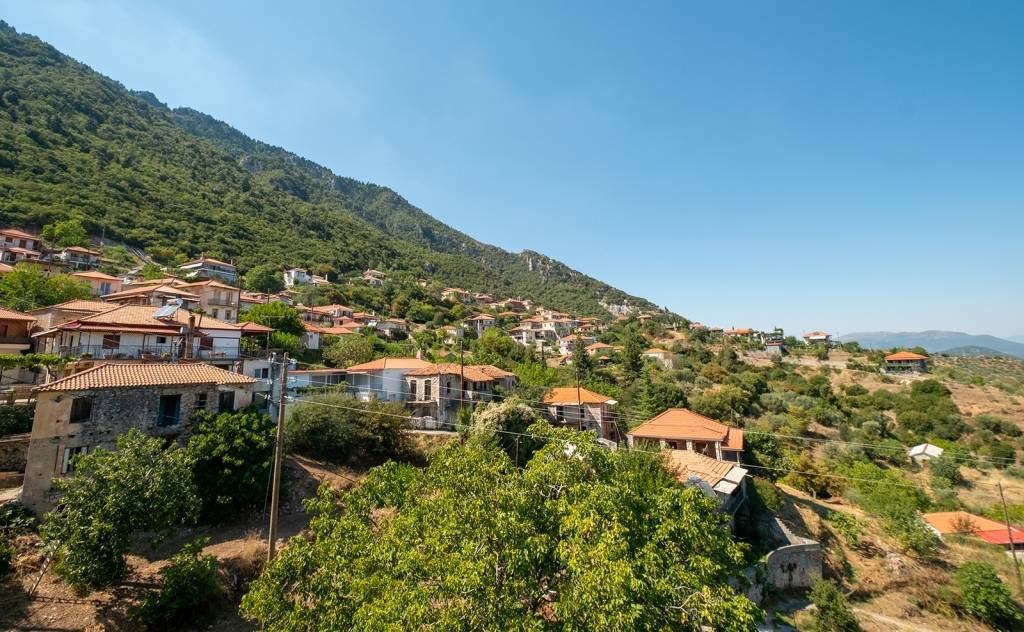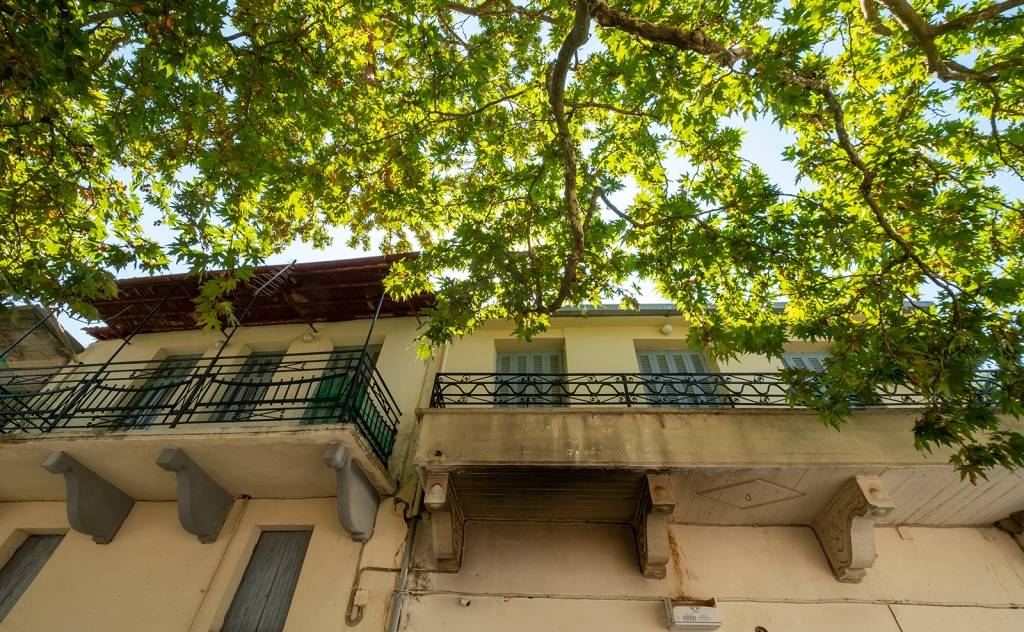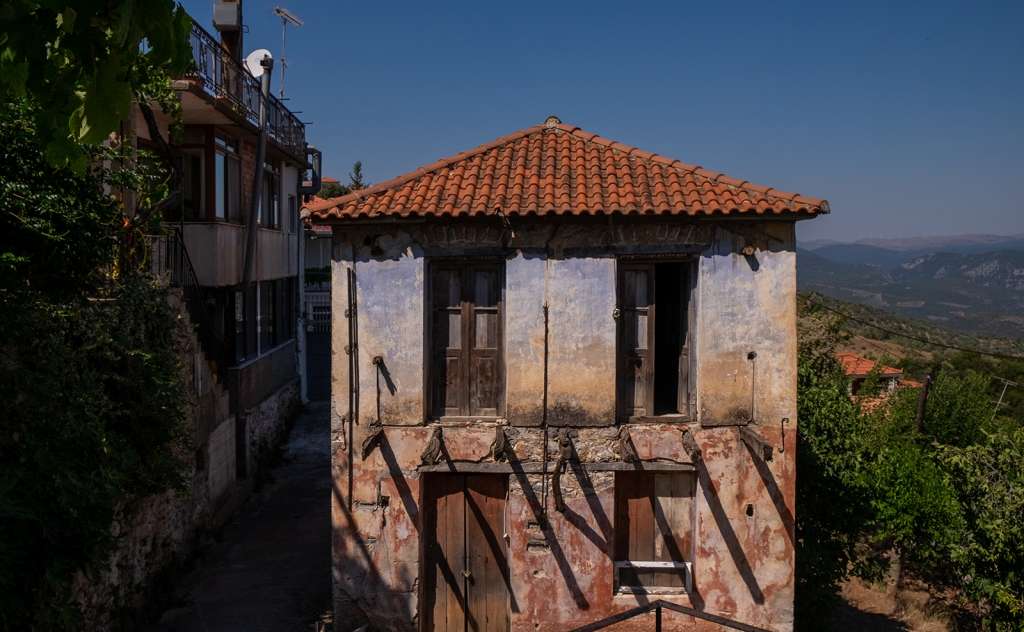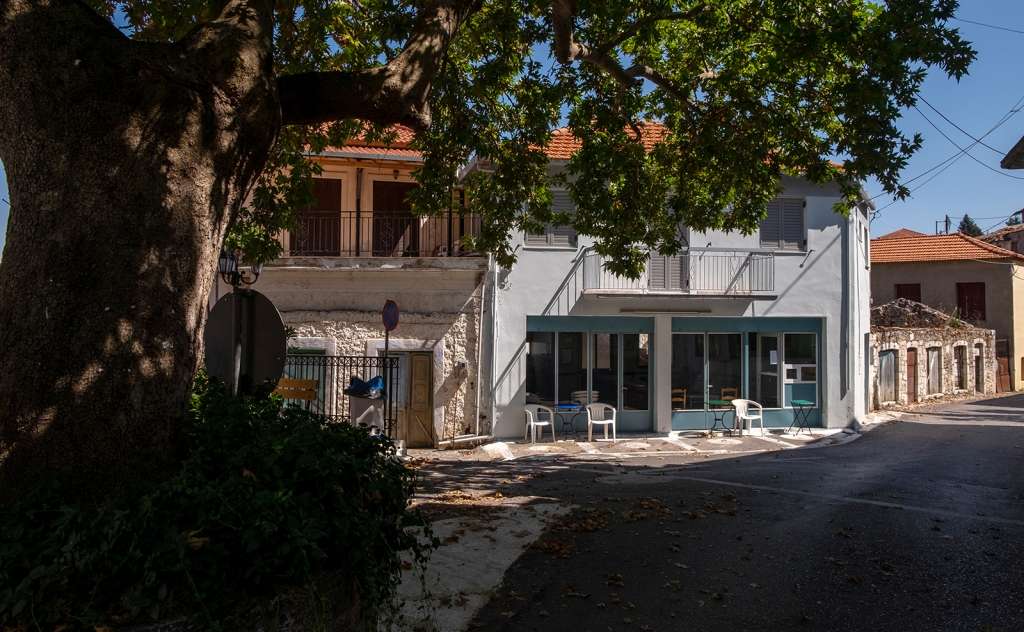







The mountain village of Loganikos is located at the northwestern tip of Laconia. It is built at an altitude of 750 metres, on a green slope, 36 kilometres from Sparta.
The village was mentioned by Stefano Magno (Venetian chronicler), with its current name in 1453. The area is identified with the ancient Velamini (Velmini), also mentioned by Pausanias. In ancient times, the passage to Amaliada and the royal street of the Paleologos family were located here. Remarkable Archaic, Classical, Hellenistic, Byzantine and Post-Byzantine monuments are preserved in the area, emphasising the place's long history. The area is also ideal for mountain hiking lovers.
At Loganiko, visitors can admire the stone houses, wells, watermills and fountains - all excellent examples of folk architecture. Entering the village, one meets the "Kanava" or "Petra Loganikos" suburb. On the right, the steep mountain slope of Taygetos begins with the five Byzantine churches and the castle. You can see the village's cemetery with the Katholikon of the Georgios Monastery on the left. The most typical example of this kind of folk architecture is the tower house, located west of the Temple of the Ascension. It is the best surviving house of the Late Byzantine settlement, built with mudstone and bricks with openings in the facades. Specifically, it is of one room with a vaulted ground floor and a floor that reminds visitors of the Late Byzantine houses of Mystras. The house was covered with a wooden roof with Byzantine type tiles.
The historical settlement of Kotitza (or Kotitsa) is also located at Loganikos. Barbaraina, Mega Pigadi and Koutouni with crystal clear, cold waters are offered for those seeking peace and relaxation. Kotitza was a noble village in the area, and its inhabitants were engaged in trade and silkworm breeding.
According to historical sources, the settlement flourished from the end of the 15th century to the 18th century and was inhabited by well-known families of the Byzantine and Post-Byzantine Mystras. The short distance from the castle town of Louganikos suggests a close relationship between the two small towns. The Turkalbanians completely destroyed the settlement after the Orlov Revolt (1770). The reason the settlement fell victim to the brutality of the Turkalbanians was that its wealthy inhabitants had financed this revolution. Today, only the ruins of buildings and temples of the Byzantine period that testify to the nobility of Kotitza are preserved.